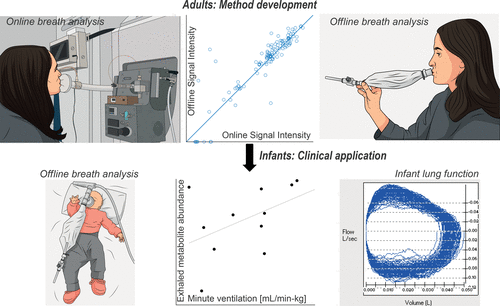Combination of exhaled breath analysis with parallel lung function and FeNO measurements in infants
Fabienne Decrue, Kapil Dev Singh, Amanda Gisler, Mo Awchi, Jiafa Zeng, Jakob Usemann, Urs Frey and Pablo Sinues
Abstract:
Breath analysis by secondary electrospray ionization-high resolution mass spectrometry (SESI-HRMS) offers the possibility to measure comprehensive metabolic profiles. The technology is currently being deployed in several clinical settings in Switzerland and China. However, patients are required to exhale directly into the device located in a dedicated room. Consequently, clinical implementation in patients incapable of performing necessary exhalation maneuvers (e.g., infants) or immobile (e.g., too weak, elderly, or in intensive care) remains a challenge. The aim of this study was to develop a method to extend such breath analysis capabilities to this subpopulation of patients by collecting breath samples remotely (offline) and promptly (within 10 min) transfer them to SESI-HRMS for chemical analysis. We initially assessed the method in adults by comparing breath mass spectra collected offline with Nalophan bags against spectra of breath samples collected in real time. In total, 13 adults provided 176 pairs of real-time and offline measurements. Lin’s concordance correlation coefficient (CCC) was used to estimate the agreement between offline and real-time analyses. Here, 1249 mass spectral features (55% of total detected) exhibited Lin’s CCC > 0.6. Subsequently, the method was successfully deployed to analyze breath samples from infants (n = 16), obtaining as a result SESI-HRMS breath profiles. To demonstrate the clinical feasibility of the method, we measured in parallel other clinical variables: (i) lung function, which characterizes the breathing patterns, and (ii) nitric oxide, which is a surrogate marker of airway inflammation. As a showcase, we focused our analysis on the exhaled oxidative stress marker 4-hydroxynonenal and its association with nitric oxide and minute ventilation.


